Why AI Companies Need Purpose-Built Finance Infrastructure (& How Zenskar Delivers It)

Usage-based pricing isn’t new. From the 2010s, early adopters like AWS and Twilio have switched to UBP and enjoyed tremendous growth.
It had also gradually entered business applications. Intercom charges per conversation, Segment pricing is based on API calls, and Mailchimp charges by contacts and email volume
But the introduction of AI has changed the equation.
The same product can deliver wildly different value depending on the problem it solves, the AI model powering it, and the data it accesses.
Value is no longer binary; it exists on a spectrum.
The ability to price for that value has evolved too, but billing infrastructure (the ability to monetize value flexibly) hasn't kept pace.
The question isn't whether your billing tool supports usage-based pricing. It's whether it can handle what AI companies actually demand:
- Variable consumption across model tiers,
- Credits that burn at different rates,
- Contracts where pricing for one product depends on the usage of another,
- And, pricing that needs to EVOLVE as quickly as the product itself.
Where Traditional Billing Systems Break Down
The retrofitting problem
Most billing platforms today were designed in an era when billing meant predictable subscription models (monthly or annual). When usage-based became popular, it was added as a feature to meet market demand, but the underlying architecture remained unchanged. This created fundamental limitations that AI companies hit immediately.
Usage is treated as an afterthought
In traditional systems, usage data is treated as a second-class citizen, something utilitarian that exists primarily to generate invoices.
This manifests in critical limitations: Usage data is always coupled with pricing logic.
Want to test pricing based on volume instead of tokens? That's not a simple configuration change. It requires rebuilding your data pipeline, updating API integrations, and carefully migrating existing customers.
This takes weeks instead of hours, because the system wasn't designed to handle usage independently from pricing.
Linear data models can't represent AI's complexity
Traditional platforms store pricing as rows in a database.
Product A costs $X per unit, Product B costs $Y per month. This linear approach works for simple usage-based tiers, but breaks down completely for AI.

Consider a common AI pricing structure:
“Charge $0.002 per token for GPT-3.5 and $0.006 for GPT-4, with a 15% discount when monthly spend exceeds $1,000, where customers can purchase credit bundles at $100, $500, and $1,000 that consume at different rates depending on model selection.”
Or even more complex: "Price feature C based on how much the customer uses feature B."
Linear models can't handle these dependencies. They can't represent conditional logic where one product's pricing depends on another product's consumption.
And you end up forcing complexity into custom code that becomes a maintenance nightmare.
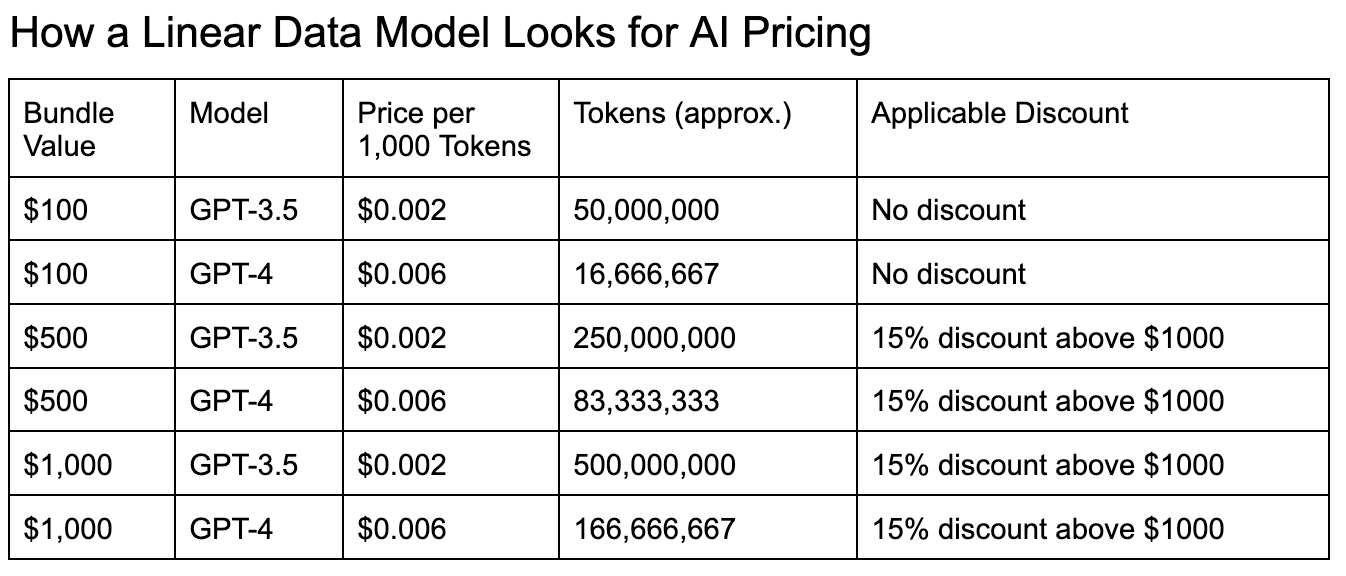
The Revenue Recognition Nightmare
AI's economics create accounting complexity that traditional billing systems weren't designed to handle.
Credits and consumption don't align neatly
When a customer purchases $10,000 in AI credits upfront, you can't recognize that as revenue immediately. ASC 606 requires deferring it until the credits are actually consumed.
But in the real world, consumption patterns vary wildly.
One customer might burn through their credits in two weeks using expensive AI models heavily for complex analysis. Another might stretch the same credit amount over six months, using cheaper models for simpler tasks. A third might load credits but barely use them at all.
Traditional systems weren't built for this.
They lack the double-entry accounting architecture needed for accurate revenue recognition. They can't automatically track contract assets (unbilled revenue), contract liabilities (deferred revenue), or create the journal entries required for accurate financial reporting.
The result? Manual reconciliation.
Finance teams export usage data, match it against credit purchases, calculate consumption rates, manually create journal entries, and hope they got it right. Every month. For every customer.
According to CFO Dive, a 20-person finance team typically loses 1,920 hours annually (nearly $125,000 in costs) to manual accounting tasks. For AI companies with complex credit-based models and variable consumption, that burden multiplies.
The developer dependency trap
Perhaps the most damaging limitation of traditional billing systems is how they turn engineering teams into bottlenecks for business decisions.
Finance teams lose autonomy
Because usage and pricing are tightly coupled in traditional systems, developers must be involved in every pricing change.
Finance can't experiment independently. They can't respond to market feedback quickly. They can't launch a new tier without opening engineering tickets.
Engineers become billing gatekeepers
Your best developers, the ones who should be improving the product, building new features, and driving product innovation, instead spend cycles on billing logic. They debug invoice calculations, maintain pricing rules. handle edge cases in credit consumption.
The opportunity cost is staggering.
High-value projects get delayed
Imagine, sales closes an enterprise contract with custom pricing:
- Different rates for different model tiers,
- Volume commitments with monthly drawdown,
- And, outcome-based bonuses for hitting accuracy targets.
The contract is signed. The customer is excited. Revenue is on the books.
But go-live takes three months because engineering has to build custom billing logic to handle the terms.
By then, competitive dynamics have shifted, the customer is frustrated, and it leaves a sour taste in the relationship.
How Zenskar Was Architected for AI Companies
Before building anything, Zenskar's founders, Apurv Bansal and Saurabh Agrawal, spoke with 500+ finance leaders at modern SaaS, Fintech, AI and Services companies which had simple subscription, usage-based and more complex pricing
The pain points were consistent:
- "We can't make changes to subscriptions without engineering."
- "Engineers have to aggregate usage and send the final output to finance."
- "Our pricing structure is customized for every customer and that makes everything downstream on revenue side operations complex."
- "We have to do revrec manually for 100+ customers"
Rather than keeping usage and revenue recognition as secondary features bolted onto billing, they decided to build billing, revenue recognition, and usage infrastructure from the ground up, decoupled, yet fluid enough to talk to each other, and purpose-built for AI's complexity from day one.
Graphical Data Model: Pricing Without Limits
Traditional platforms store pricing linearly, rows in a database, each product with its own fixed price. This works until your contracts get complex. Zenskar takes a fundamentally different approach.
It’s built on a graphical data model that represents relationships, not just records. It captures dependencies, hierarchies, and conditional logic natively. This means you can express pricing rules the way you actually think about them.
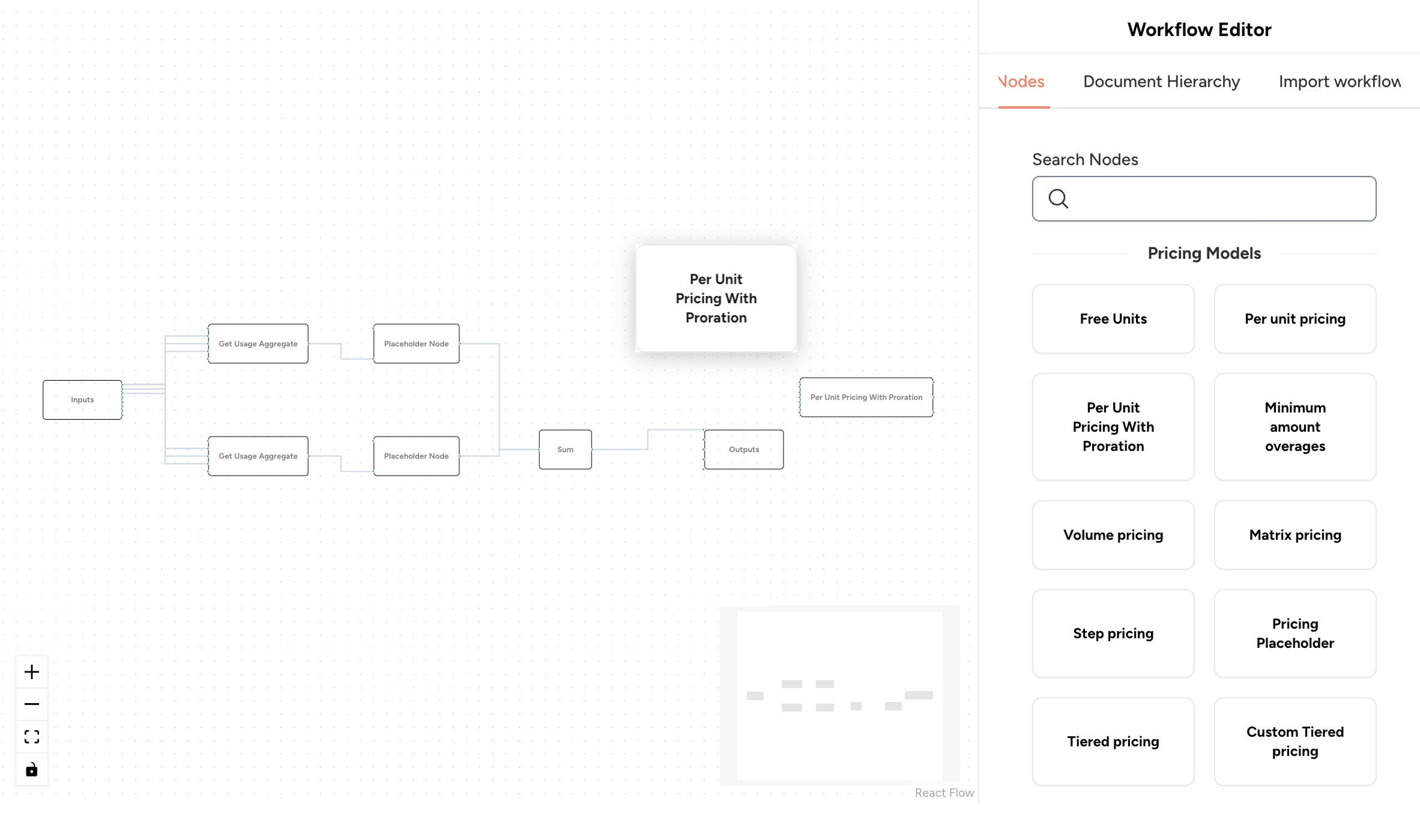
Remember that complex AI pricing structure?
"GPT-3.5 at $0.002 per token, GPT-4 at $0.006, 15% discount above $1,000 monthly spend, credit bundles consuming at different rates by model."
In Zenskar, this is easily configurable through the UI without custom code. The graphical model recognizes that credit consumption is dependent on model selection, that discounts apply across usage thresholds, and that bundle pricing influences token rates.
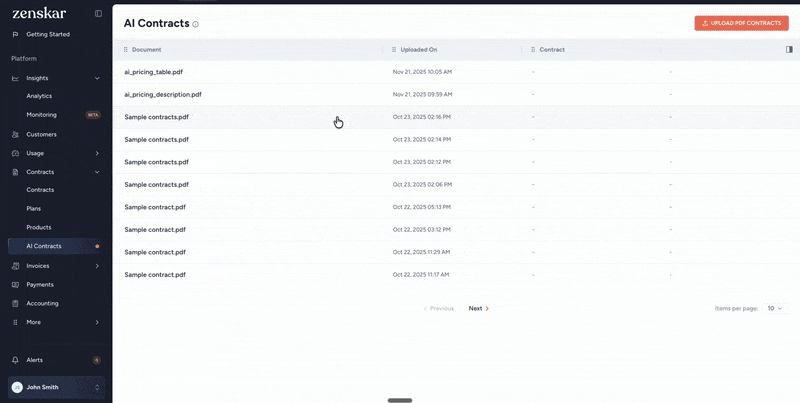
If you can describe your pricing in plain English, you can implement it with Zenskar.
Decoupled Metering: Track Anything, Price Independently
In traditional systems, metering and billing are coupled.
Change how you track usage, and you break pricing. Change pricing, and you have to reconfigure metering.
Zenskar decouples them entirely.
Your engineering team connects your database or warehouse once, via native connectors, APIs, or CSV uploads. Zenskar's ingestion engine processes 100,000 usage events per second, built for AI's data volumes from day one.
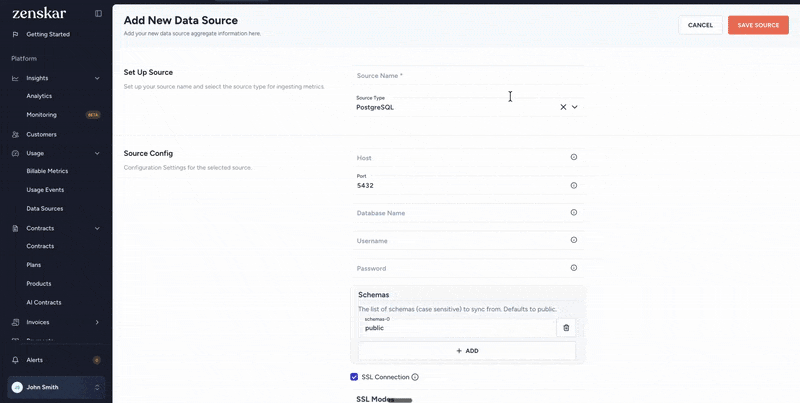
Finance can then aggregate and create billable metrics from that raw data independently. Add those metrics to your products, and you're ready to launch new pricing without touching the data pipeline.
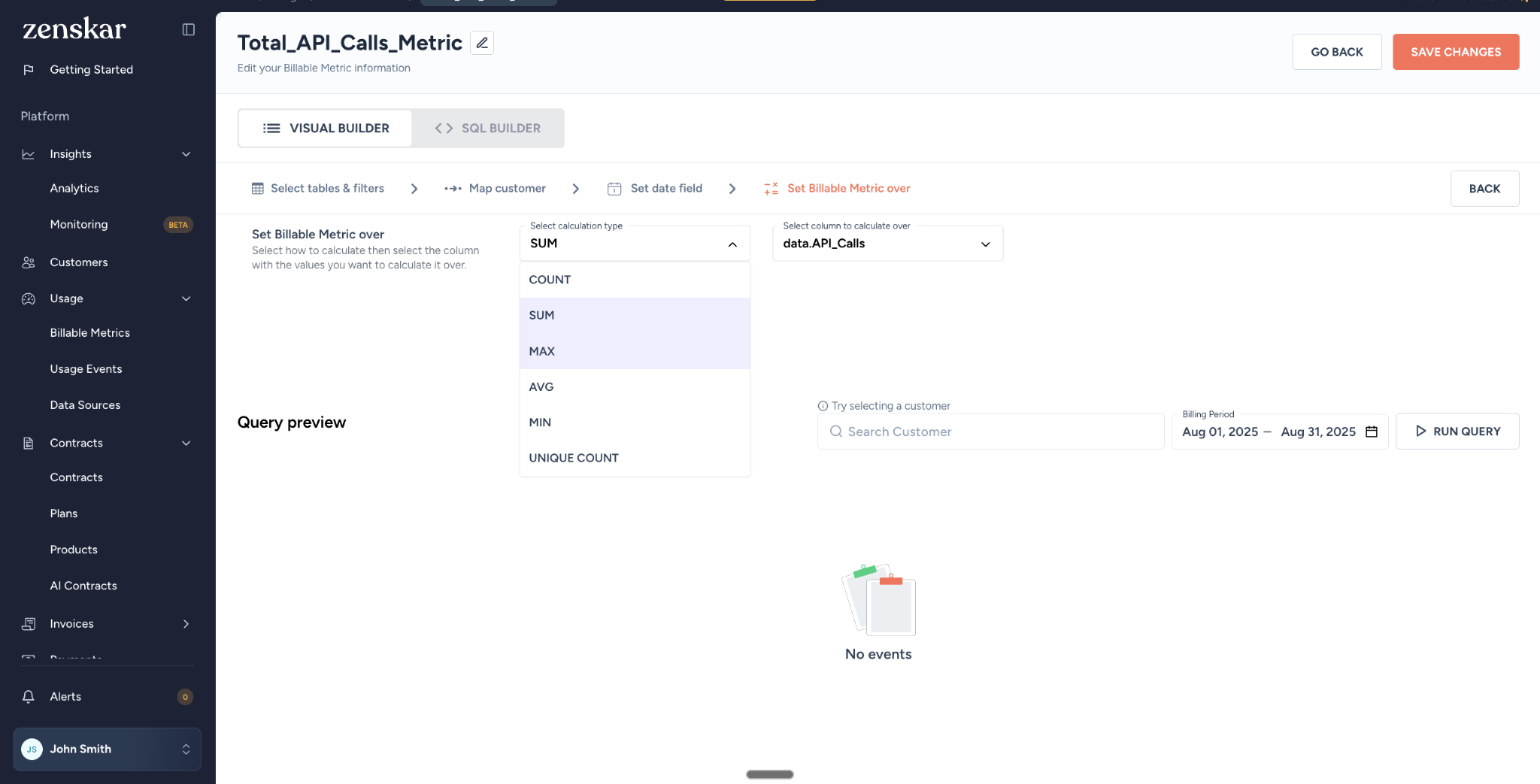
This enables them to:
- Experiment with different pricing models using the same underlying data
- Quickly onboard enterprise customers with bespoke terms
- Add new billable metrics without modifying metering infrastructure
- Shift pricing strategies without rebuilding integrations
Posh, a conversational AI company serving banks and financial services, faced exactly this challenge. They offered voice assistants, chatbots, and knowledge bases—each with different billing models: monthly subscriptions, annual contracts, usage-based charges, and one-time fees.
With Zenskar's decoupled architecture, their invoicing and revenue schedules operate independently. They recognized revenue based on actual go-live dates rather than invoice dates—satisfying ASC 606 standards without manual workarounds.
Native Credit & Access Management: Built for AI Economics
Customers want predictable spending, but AI consumption often varies. Prepaid credits solve this by giving customers control while giving you cash flow visibility. But credits alone aren't enough. You also need to control what customers can access based on their purchases.
Zenskar unifies both in one system.
On the credit side, you can:
- Define what a credit represents: tokens, API calls, compute minutes, task completions
- How to price these credits based on the model or feature the customer uses
- Configure rollover, expiration, and top-up rules
Revenue is also automatically deferred when credits are purchased and recognized as they're consumed.
On the access side, you can set limits per plan and decide what happens when customers hit them.
Block access entirely, send alerts as thresholds approach, or nudge users to upgrade. Control which features are available at each tier (e.g, standard plans get GPT-3.5, premium unlocks GPT-4) without writing custom code.
SquadStack, a Voice AI platform, ran into exactly this challenge. Their customers purchased prepaid credits upfront and then consumed them across different AI agent types, each with varying costs.
Before Zenskar, tracking credit balances, consumption rates, and multi-client allocations meant hours of manual work. Finance teams spent entire weeks each month on billing calculations alone.
Zenskar automatically updates credit balances as calls are processed. Enterprise customers can now see their real-time usage across campaigns. And the finance team is now able to redirect time from spreadsheet work to strategic initiatives.
"With Zenskar, we automated everything in one implementation and freed up our developers to focus on AI innovation instead of billing logic. Best technical decision we've made for operational efficiency."
— Vikas Gulati, Cofounder & CTO, SquadStack
Revenue Recognition That Works Flawlessly
Most billing platforms stop at invoicing. You generate the invoice, send it to the customer, and figure out revenue recognition separately, usually in spreadsheets.
But Zenskar goes beyond billing. Double-entry accounting is built into Zenskar’s foundation.
Every transaction, contract signed, invoice generated, payment received, and credit consumed creates proper journal entries.

This matters for AI companies because revenue recognition gets complicated fast.
- Different products under the same contract have different billing schedules
- Usage-based charges are recognized differently from flat fees.
- Credits purchased upfront need to be deferred until consumed.
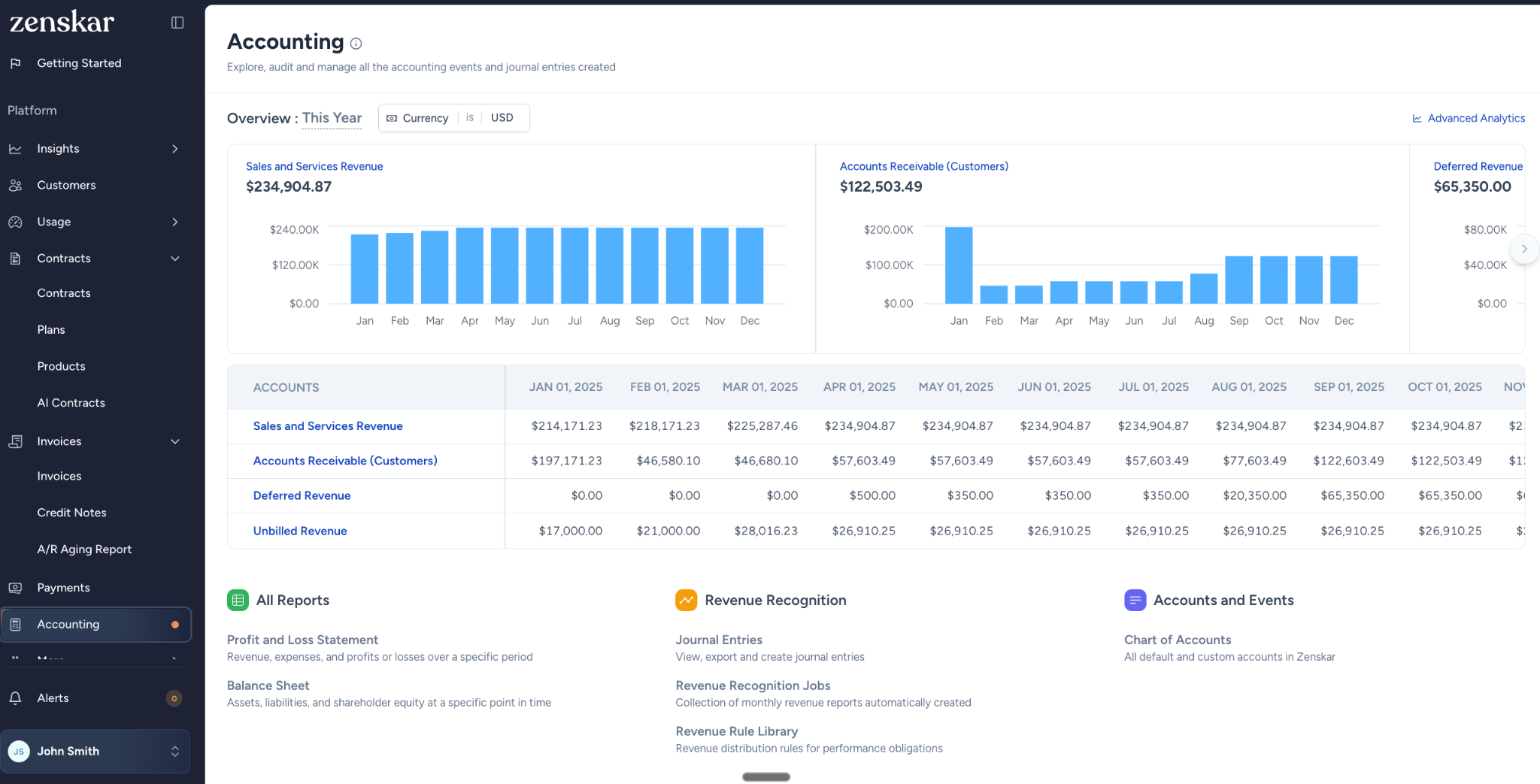
While traditional systems force you to track all of this manually, Zenskar automates it end-to-end.
Before Zenskar, Posh's finance team relied on spreadsheets to track revenue schedules, manually handling diverse contract terms, varying fiscal years, and service periods. Different go-live dates and contract amendments made things worse.
Zenskar made the entire process seamless. It generated performance obligations directly from contract terms. Custom revenue schedules accommodated different products, flat fees, usage-based fees, and one-time fees without needing to manually map them. Journal entries were automatically created based on events with audit trails, and revenue was recognized in real time as usage were consumed.
With this, Posh was able to reduce their month-end close from 8-10 days to a few hours and their finance team saves 30 hours monthly by eliminating manual processes and spreadsheets entirely.
Beyond Billing: Usage Data as Your AI Growth Engine
AI companies generate more usage data than any other software category. Every API call, every model interaction, every token consumed creates a signal. Most companies are sitting on a goldmine they can't analyze against revenue because their billing systems treat usage as an input to invoices, nothing more. Zenskar changes that.
Learn before you price
A majority of AI companies lack insights into how customers actually derive value from their products.
Zenskar's modular architecture lets you start tracking usage even before you monetize it. Create billable metrics without attaching prices. Build dashboards to understand adoption patterns, feature frequency, and power users using the SQL/no-code aggregation tool.
This means you can identify which features drive retention, spot power users for upsells, and discover underutilized capabilities that might need better packaging. Even if you're not ready for pricing experiments now, understanding how customers use your product creates the foundation for smarter pricing decisions later.
Enable product-led growth
AI products are natural fits for product-led growth. Let customers try features within credit limits. Prompt upgrades when they approach thresholds. Enable self-serve expansion based on actual consumption.
Zenskar enables this with real-time entitlement checks, transparent usage and cost dashboards, and automated alerts that nudge customers to upgrade or purchase credits before they hit limits. Customers can self-serve plan upgrades, top-up credits, and manage payment methods, all without waiting on your team.
Connect usage to unit economics
AI costs vary significantly (e.g, cost of GPT-4 isn't the same as GPT-3.5). Without visibility into consumption patterns by customer, feature, or model tier, pricing decisions become guesswork.
When usage flows through your entire revenue system, you can connect consumption to cost and value. Identify which customer segments are most profitable. Spot accounts whose usage patterns don't match their pricing tier. And conform your pricing strategy with real data, not assumptions.
The AI economy is here. Can Your Billing Keep Up?
AI isn't slowing down. Agents are evolving faster than the systems meant to monetize them.
Sales agents closing deals, marketing agents generating leads, support agents resolving issues end-to-end, each one demands a different, innovative pricing model. AI pricing is still being figured out. The companies that win will be those that can experiment fastest.
In this fast-moving landscape, the cost of choosing the wrong billing infrastructure is steep: 3-6 months per pricing change, revenue leakage through manual processes, and customer churn.
Purpose-built infrastructure changes the equation. Launch new pricing in days. Iterate without engineering bottlenecks. Bill accurately, no matter how complex the contract. Recognize revenue correctly the first time.
That's what Zenskar was built for.
Not adapted. Not retrofitted. Purpose-built for the AI economy from day one.
SquadStack Case Study: Streamlining Billing with Zenskar

















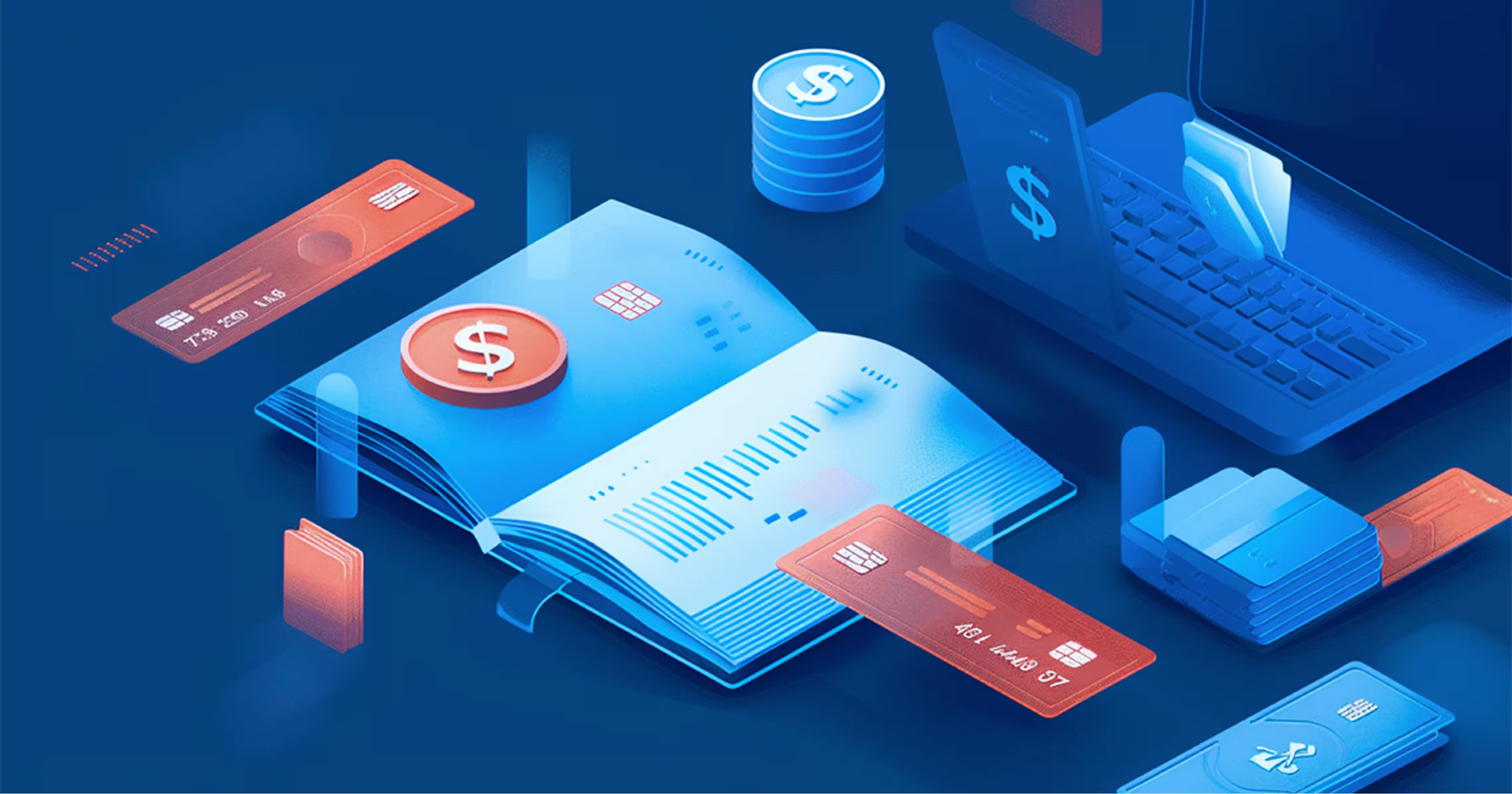

%20be%20truly%20invisible_.webp)






